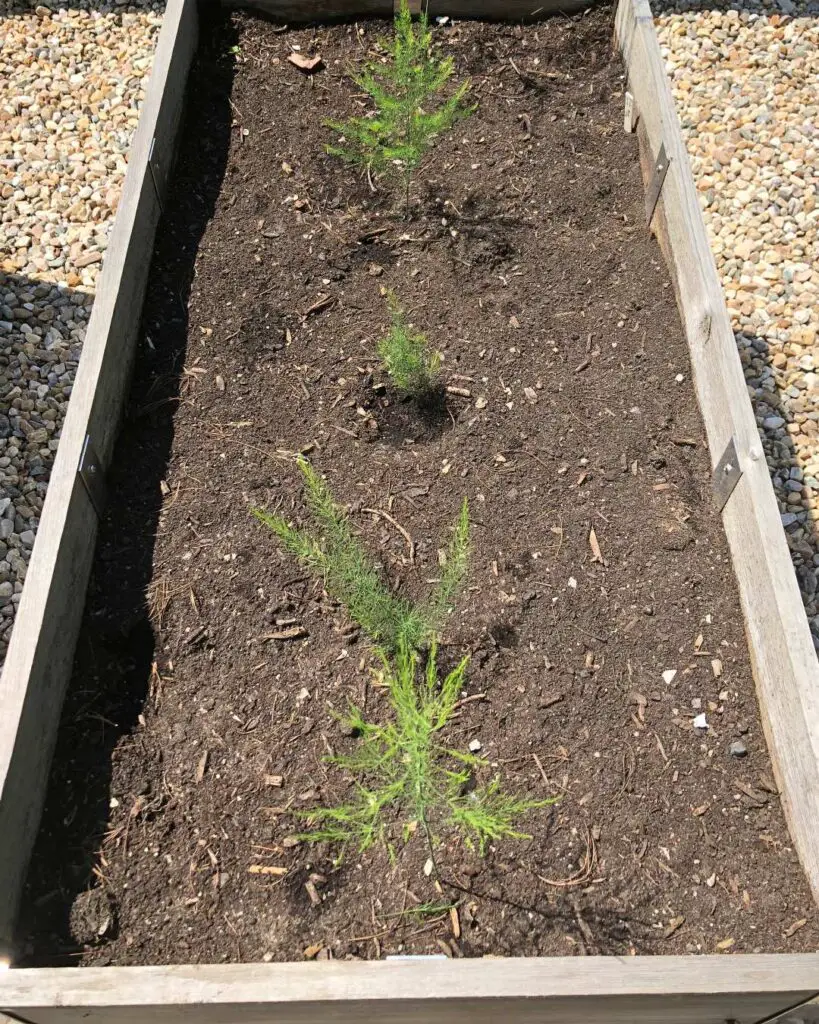There are some vegetables that thrive in temperate climates and need cooler weather to row best – like brussels sprouts and artichokes. But what about another cool-weather vegetable; asparagus?
Can you grow asparagus in the tropics? While asparagus usually prefers to grow in growing zones 3 through 8, asparagus can successfully be grown in the tropics. This post will tell you how.
While you may think of asparagus as a temperate crop, it all comes down to the variety. There are some varieties of asparagus that love humidity and sunshine – perfect for growing in a place like Hawaii.
Growing Asparagus in the Tropics
Things to Know about Growing Asparagus in the Tropics:
Yes, you can grow asparagus in the tropics, but there are some things to keep in mind:
1. Choose a suitable variety.
You want to use a heat-tolerant asparagus variety, such as Atlas, Apollo or De Paoli types which do best in the heat and humidity of the tropics.
Keep in mind, that these are also drought-tolerant types, so do not overwater them! You may find the natural rainfall you receive is more than enough for these plants.
2. Asparagus will likely grow slower than one grown in a temperate climate.
This comes as a surprise to many, who expect their asparagus to grow faster in Hawai’i than it does in the continental US. This is due to soil temperature.
There is an ideal temperature for asparagus growth (around 73 – 85F). Once temperatures are higher than 85F, the asparagus growth will actually slow down. This simply means it will take longer for your asparagus to reach maturity and harvest it, not that it’s not possible to grow it.
But, if you’ve ever grown asparagus, you know that it can keep producing for a long time. If you time your planting right and are patient with that first harvest, you may find a continual supply of asparagus throughout the year, once it is ready.
Soil Requirements
Another thing to keep in mind is the soil you plant your asparagus in.
Look for a ph -balanced soil (not acidic) that is well-draining.
Raised bed

Because of the risk of too much moisture here in the tropics, and because asparagus need to grow tall, it’s a good idea to plant your asparagus in a raised bed.
Ways to make the soil well-draining are adding a layer of gravel at the bottom of the raised bed or mixing sand in with the soil.
Soil Nutrients
Another tip: asparagus like lots of phosphorus. You can add more phosphorus to your soil by mixing in chicken manure, bone meal or rock phosphate when creating your raised bed.
Sun Requirements
Asparagus like sun! Plant them somewhere they can get full sun (6-8 hrs is ideal).
Because they grow tall (from 3-5 feet), you can also plant them beside other vegetables that need a bit more shade.
Sowing Asparagus
Asparagus will be slow-growing in the tropics and will take even longer if sown from seed.
However, in Hawai’i, the most common growing method is from seed, as that has proven easier than getting the seedling ‘crowns’ for planting.
The University of Hawaii suggests planting seeds in pots and moving them after 3 months. You should have healthy seedlings by this time. You should see your first crowns after approximately a year.
Weeding
After it is well-established, asparagus is an easy-to-maintain plant. But, during the first months, you should regularly remove weeds by hand, to ensure there is no competition with the young asparagus shoots.
Male versus female
The male plants are what you want to eat. They grow tall and make for a delicious side dish.
The female plants produce small red berries. Don’t eat them – they are poisonous to humans. However, inside of those berries are the asparagus seeds for your next crop, so keep them to plant (remembering they can take up to 2 years before they will be ready to eat – so space out your planting wisely).
Harvesting Asparagus

Here is the beauty of growing asparagus – it is a plant that can live for 15 or more years! And, if you time your harvesting right, you can get fresh asparagus year-round in a climate like Hawaii.
That means that with only 8-10 all-male asparagus plants (the ones that only produce edible crowns, no females with berries), you can harvest enough year-round produce to feed your family.
In our tropical climate, asparagus can grow as fast as 6-8 inches in a single afternoon! (the only other plant that grows that fast is bamboo).
Since cut asparagus doesn’t last long, even in the fridge, it’s a good idea to prepare it and eat it within a day or two of harvesting.
Pests
Asparagus Beetles

There is one famous pest of the asparagus plant and that is the asparagus beetle.
Unfortunately, this creature has also made its way over to Hawaii, so you should be aware of it. These beetles will lay eggs in your plants and eat the stems, and, if left unrestricted, destroy your asparagus crop.
Thankfully, there are several natural predators of asparagus beetles that will eat up the bugs for you.
Lady bugs (eat larvae and eggs)
Dragon flies (eat the adult beetles)
Chickens (eat the adult beetles)
Overall, ladybugs are very useful in gardens and eat aphids, too. So introduce some of these beneficial bugs to your entire garden, not just your asparagus bed.
If you find you have an issue with the adult asparagus beetles eating up your plants, then try letting your chickens have a buffet for a day or two in your asparagus bed.
Homesteaders have successfully grown asparagus in Cambodia, Nigeria and Australia – so you certainly can grow it in the tropics, but you may need to do it a bit differently than your friends who live in a temperate zone.
